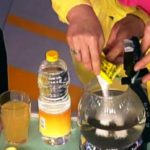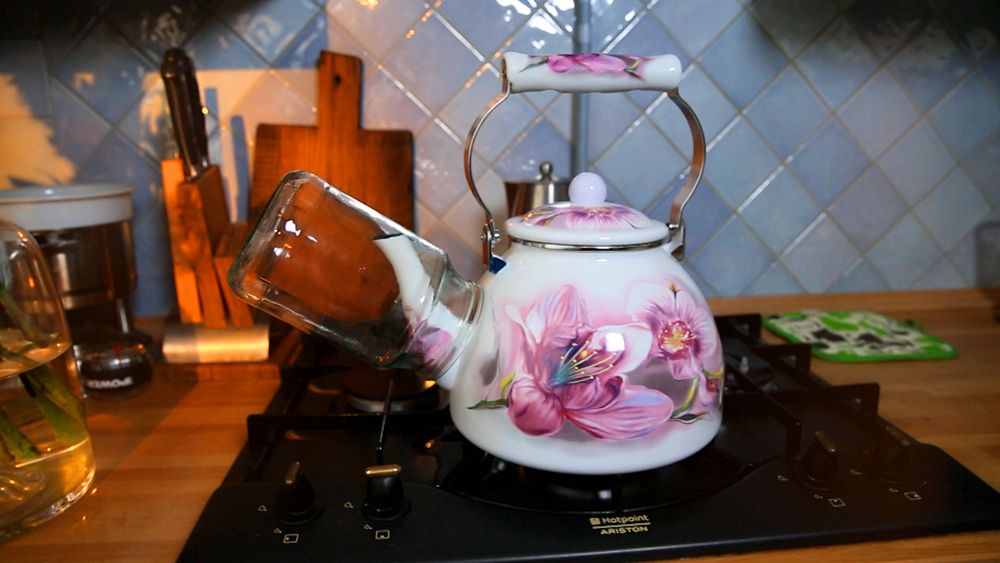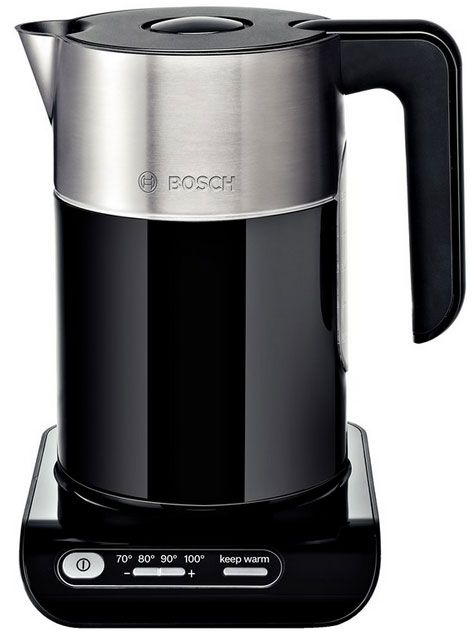How to clean a kettle from rust
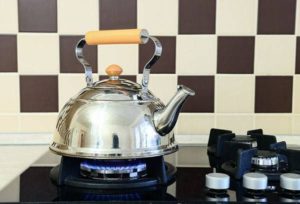 The water we drink has varying degrees of hardness. Often contains various impurities, oxides, mineral salts, microelements. Due to this, reddish-brown rust stains will form over time inside the kettle. There are several simple ways that you can easily remove plaque at home.
The water we drink has varying degrees of hardness. Often contains various impurities, oxides, mineral salts, microelements. Due to this, reddish-brown rust stains will form over time inside the kettle. There are several simple ways that you can easily remove plaque at home.
The content of the article
Why you need to clean the kettle from rust
Rust on the bottom and walls of a kitchen appliance not only gives it an unsightly appearance, but also worsens the taste of boiling water. The prepared drinks acquire an unpleasant, metallic taste. In addition, the raid creates a number of other problems:
- Using water contaminated with rust for preparing food and drinks poses a threat to human health. Once in the body, it accumulates in the body, damages the gastrointestinal tract, liver, genitourinary system, and provokes the development of serious diseases.
- The resulting deposit, especially on the spirals in electrical appliances, prevents the rapid boiling of water. This significantly prolongs the heating process and consumes more electricity.
- Rust gradually corrodes the kettle from the inside, which over time leads to its complete disrepair. If you clean the accumulated deposits in a timely manner, the device will last for a long period.
If you notice rust inside a kitchen appliance, you shouldn’t throw it away and rush to buy a new one. The existing problem can be easily resolved using several simple methods.
IMPORTANT! Water with a high iron content, when boiled frequently, always leaves rust stains on the walls and bottom of the cookware. For electric kettles, their formation poses a great threat, since the device fails faster.
Effective ways to clean rust from a kettle
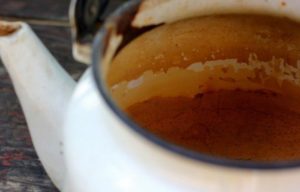 The most inexpensive, popular and effective ways to get rid of rust are still traditional methods. They are not only effective, but are always at hand and are absolutely safe for human health and utensils:
The most inexpensive, popular and effective ways to get rid of rust are still traditional methods. They are not only effective, but are always at hand and are absolutely safe for human health and utensils:
1. Citric acid is the most effective method in combating rust formation. Pour one or two bags of citric acid (depending on the degree of contamination of the device) into the kettle and fill with water almost to the top. Bring the resulting solution to a boil, boil for 10–20 minutes, drain, and rinse the container with clean water. A packet of acid can be replaced with freshly squeezed juice of one lemon.
2. Vinegar - this cleaning method is not inferior in effectiveness to citric acid. Apple cider vinegar and 6–9% table vinegar are suitable. Pour water 3/4 full into the utensils with rust stains and boil. Add the remaining 1/4 with vinegar and leave the device for 7–9 hours. Drain the solution and rinse the kettle well. If vinegar is not available, you can use vinegar essence at the rate of 3 teaspoons per liter of water. To enhance the effect, add a little salt.
3. Soda – pour half the volume of water into an enamel kettle, add 2 teaspoons of soda, boil, and simmer for 20–40 minutes. Drain the liquid and rinse the utensils thoroughly.If the appliance is electric, then after boiling, leave the water in it until it cools completely.
4. Carbonated water - the popular Coca-Cola, Fanta, Sprite or Pepsi-Cola are ideal for this purpose. In the evening, water should be poured into a bowl and left overnight. In the morning, drain the soda, thoroughly wash the utensils with a hard sponge, and rinse thoroughly with clean water.
5. Brine - from pickled tomatoes or cucumbers. Pour into a container to the top, boil, leave until cool. Drain the liquid and rinse the kettle thoroughly until the characteristic smell of brine is completely eliminated. This cleaning method is applicable to metal utensils.
6. Sour milk or kefir is a popular method among housewives. Pour 1/3 of the curdled milk into the utensils, boil, and leave in the kettle until it cools completely. Drain and rinse thoroughly with water.
7. Vegetable and fruit peelings – ideal for potatoes, pears, and apples. Wash the peelings, put them in a container, add water, bring to a boil, and leave for 3–6 hours. Drain the cleaning liquid, wash the dishes, add a portion of clean water, boil, then drain and rinse.
You can clean the kettle using special kitchen chemicals, sold in a large variety in household chemical stores. Each of them comes with detailed instructions for use, so removing rust from utensils in this way will not be difficult.
In extreme cases, regular washing powder is suitable for removing plaque. It should be poured onto existing traces of rust, moistened a little, and left for 20 minutes. After this, rub off the stains using half a raw potato.
ATTENTION! After cleaning a kitchen appliance using household chemicals, it should be rinsed very thoroughly.Boil water in a kettle and then drain it at least three times. Do not use water for preparing drinks or food until all detergent residues have been removed.
How to prevent rust from appearing in a kettle
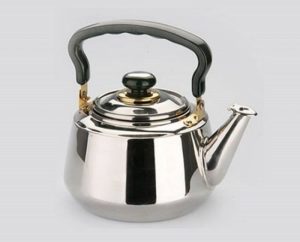 To prevent the development of various diseases, damage to the kitchen appliance and extend its service life, you should promptly clean the kettle from rust deposits. But the formation of stains can be prevented with the help of a few simple rules:
To prevent the development of various diseases, damage to the kitchen appliance and extend its service life, you should promptly clean the kettle from rust deposits. But the formation of stains can be prevented with the help of a few simple rules:
- water should be filtered before boiling;
- rinse the device after each boiling of water;
- periodically clean the kettle for preventive purposes;
- drain the remaining water after boiling, leaving the kettle dry.
IMPORTANT! Do not remove rust using mechanical means: steel wool, sandpaper, especially from enamel cookware. Kitchen utensils require careful care and timely cleaning.
Following these simple rules will help keep the kettle clean, improve the taste of the drinks you prepare, protect the device from the formation of rust stains, and significantly extend its service life.


